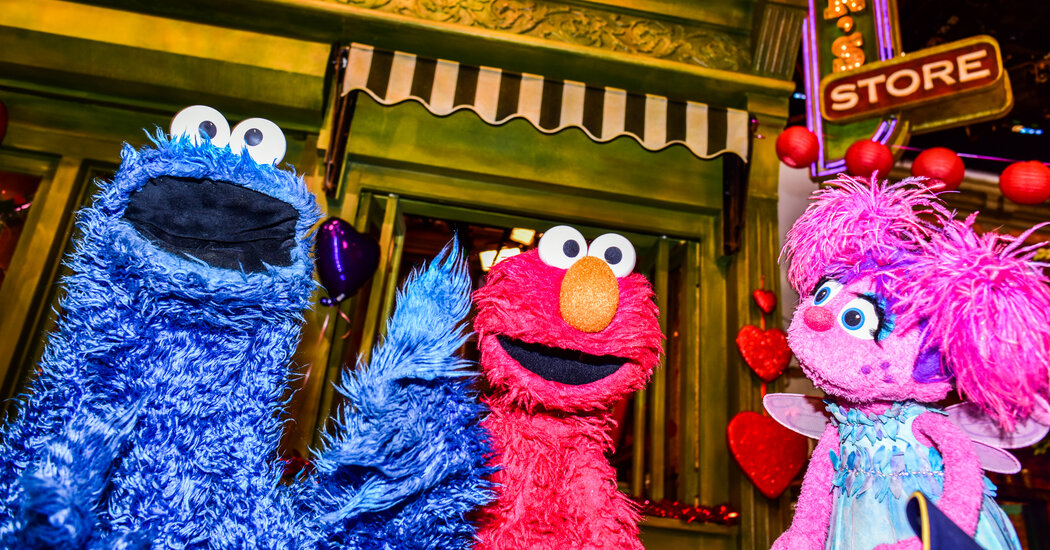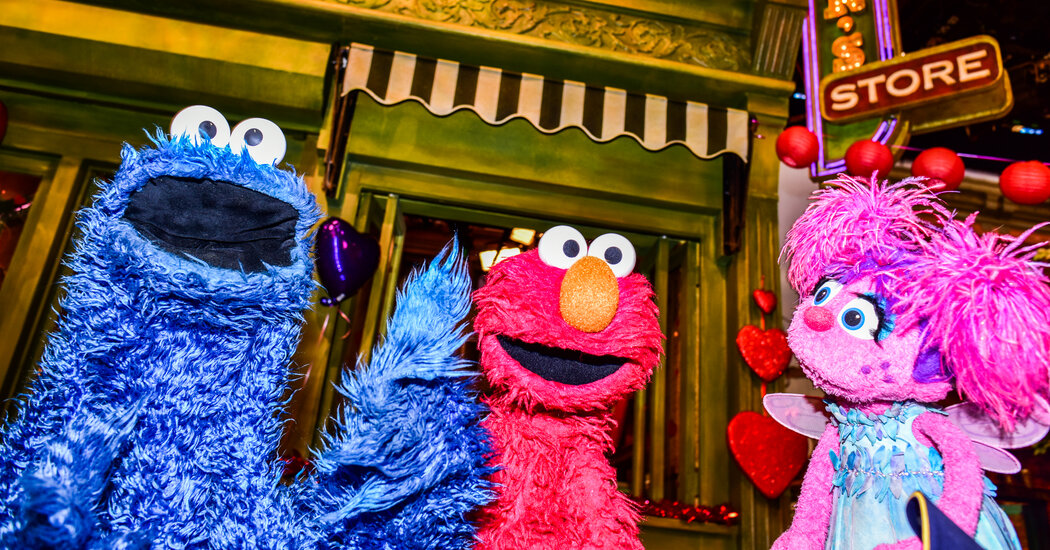## Big Bird’s Big Move: Sesame Street Flies the Coop for Netflix and PBS
Remember the days of gathering around the TV for a dose of “Sesame Street”? The iconic neighborhood, filled with furry friends and catchy tunes, has been a cornerstone of childhood for generations. But in the ever-shifting landscape of streaming, beloved characters are making new homes. Today, “Sesame Street” is taking a giant leap, signing landmark deals with both Netflix and PBS. What does this mean for the future of the show? Will Big Bird’s world evolve with the times, or will this be a nostalgic farewell to a childhood staple?

Legacy of Inequality: Can Streaming Solve a Historical Problem?

The recent news that “Sesame Street” is parting ways with HBO Max and exploring new streaming deals with platforms like Netflix and PBS has ignited a conversation about the show’s legacy and its potential to address historical inequalities in media access. Notably, the move comes after years of criticism surrounding HBO’s exclusivity deal, which restricted access to new episodes for families who couldn’t afford premium cable.
In 2019, the Parents Television Council, a conservative media watchdog group, accused HBO of “holding hostage underprivileged families” by limiting their access to “Sesame Street,” a show widely recognized for its educational value and impact on early childhood development. Tim Winter, then the president of the PTC, argued that “HBO is contributing to inequality by allowing families who can afford premium cable to get new episodes of perhaps the single most educational children’s franchise in the history of electronic media before others.”
This controversy highlights the complex relationship between media access, socioeconomic status, and educational equity. For decades, “Sesame Street” has played a crucial role in providing early learning opportunities for children from diverse backgrounds. By limiting access to the show through an expensive premium cable platform, HBO effectively created a barrier for families who could not afford it, potentially exacerbating existing educational disparities.

Streaming as a Potential Solution?
The shift towards streaming opens up new possibilities for ensuring equitable access to “Sesame Street.” Streaming platforms, particularly those with free or subsidized tiers, have the potential to reach a wider audience, including those from underserved communities. However, the effectiveness of streaming in bridging the digital divide depends on several factors.
- Affordability: While some streaming services offer free or low-cost tiers, many still require a paid subscription, which can be a financial hurdle for low-income families.
- Internet Access: A reliable and affordable internet connection is essential for accessing streaming content. Unfortunately, many communities lack adequate broadband infrastructure, particularly in rural areas and low-income neighborhoods.
- Digital Literacy: Navigating streaming platforms and using digital devices effectively requires a certain level of digital literacy. This can be a challenge for some older adults and individuals with limited technological experience.
- Access to devices and internet: Community centers, libraries, and schools can provide access to computers, tablets, and Wi-Fi hotspots, enabling families to connect to streaming services.
- Digital literacy training: Workshops and training programs can equip individuals with the skills necessary to navigate streaming platforms and utilize digital resources effectively.
- Targeted outreach and support: Community organizations can connect families with information about streaming services, educational content, and relevant resources.
Partnerships and Community Engagement
To maximize the potential of streaming for equitable access to “Sesame Street,” it is crucial to establish partnerships with community organizations that work directly with underserved populations. These collaborations can help bridge the digital divide by providing:
The Future of “Sesame Street”: Education Meets Entertainment
As “Sesame Street” embarks on this new chapter in its evolution, the show faces both opportunities and challenges in adapting to the ever-changing landscape of children’s entertainment. The digital world presents unique possibilities for interactive learning, personalized experiences, and expanded storytelling formats, but it also requires a thoughtful approach to ensure that “Sesame Street” remains relevant and impactful for today’s children.
Meeting the Needs of a Digital Generation
“Sesame Street” has always been at the forefront of innovation in children’s media. From its groundbreaking use of puppets and animation to its integration of diverse characters and storylines, the show has consistently pushed the boundaries of what is possible in educational entertainment. Now, as children grow up immersed in digital technology, “Sesame Street” must continue to evolve to meet their needs and engage them in meaningful ways.
This means embracing new storytelling formats, incorporating interactive elements, and leveraging the power of technology to create personalized learning experiences. Imagine “Sesame Street” episodes that adapt to a child’s learning pace, offer interactive games and activities, or allow them to explore virtual worlds alongside their favorite characters.
Innovation in Storytelling and Interactivity
The future of “Sesame Street” lies in finding innovative ways to blend education and entertainment in the digital world. This could involve:
- Interactive narratives: Stories that allow children to make choices, solve problems, and shape the narrative, fostering their critical thinking and decision-making skills.
- Augmented reality experiences: Bringing “Sesame Street” characters and storylines to life through interactive AR apps, allowing children to explore their environment in new and engaging ways.
- Personalized learning pathways: Tailoring educational content to a child’s individual needs, interests, and learning style, maximizing their engagement and understanding.
- Representing diverse voices and experiences: Continuing to feature characters from different backgrounds, cultures, and abilities, reflecting the richness and complexity of the world we live in.
- Exploring current social issues: Tackling topics such as diversity, inclusion, empathy, and social justice in age-appropriate and engaging ways.
- Promoting positive social norms: Modeling respectful behavior, conflict resolution, and healthy relationships, empowering children to become responsible and compassionate citizens.
Continuing Relevance: Addressing Social Issues and Promoting Inclusivity
From its inception, “Sesame Street” has tackled important social issues, promoting tolerance, understanding, and empathy. This commitment to addressing real-world challenges remains crucial in today’s world, where children face a range of social and emotional issues.
The show can continue to play a vital role in addressing these challenges by:
Conclusion
The announcement of “Sesame Street” expanding its reach through new streaming deals with Netflix and PBS marks a pivotal moment in the history of children’s television. This strategic move signifies the enduring power of the beloved show, adapting to the evolving media landscape and ensuring its accessibility to a broader audience. While PBS will continue to be the primary home for “Sesame Street,” bringing the show to Netflix opens up a whole new world of possibilities, reaching families who might not traditionally engage with public broadcasting.
This shift also highlights the growing importance of streaming platforms in shaping the future of children’s content. As traditional television viewership declines, streaming services are becoming increasingly influential in shaping what young minds consume. The presence of “Sesame Street” on Netflix suggests that even iconic educational programming recognizes the need to embrace these platforms to remain relevant and impactful. It raises crucial questions about the future of public broadcasting, the role of streaming in shaping children’s development, and the responsibility of content creators to ensure quality and educational value in a rapidly changing media environment. Ultimately, the success of “Sesame Street” on these new platforms will depend on its ability to remain true to its core values while embracing innovation and engaging with a new generation of viewers.
The path ahead is undoubtedly exciting, and the arrival of “Sesame Street” on Netflix will undoubtedly spark further conversations about the evolving nature of children’s entertainment. One thing is certain: the seeds of learning sown by “Sesame Street” will continue to grow, reaching new audiences and nurturing young minds for generations to come.
